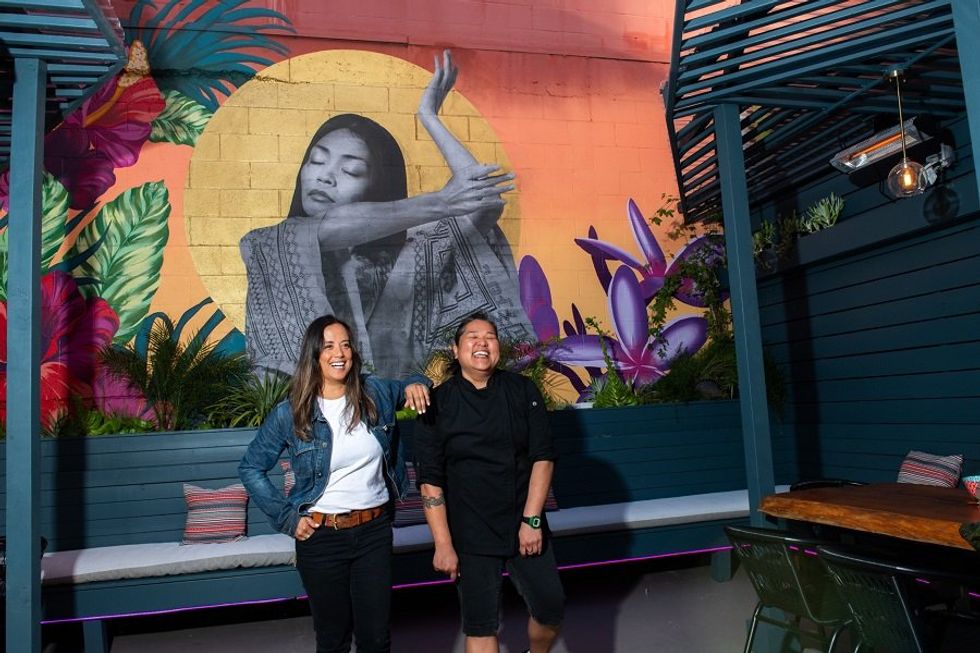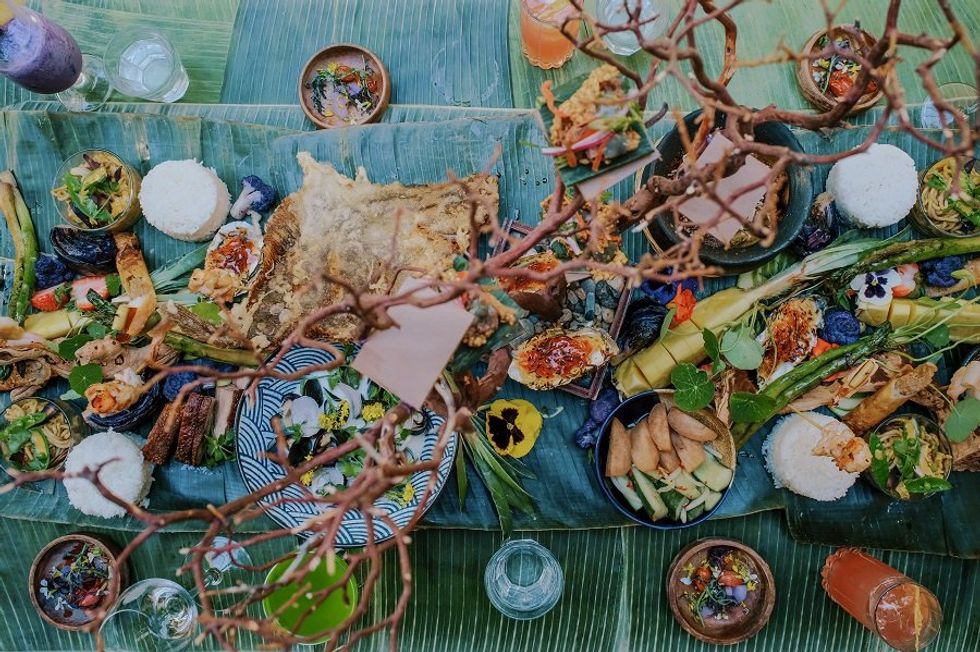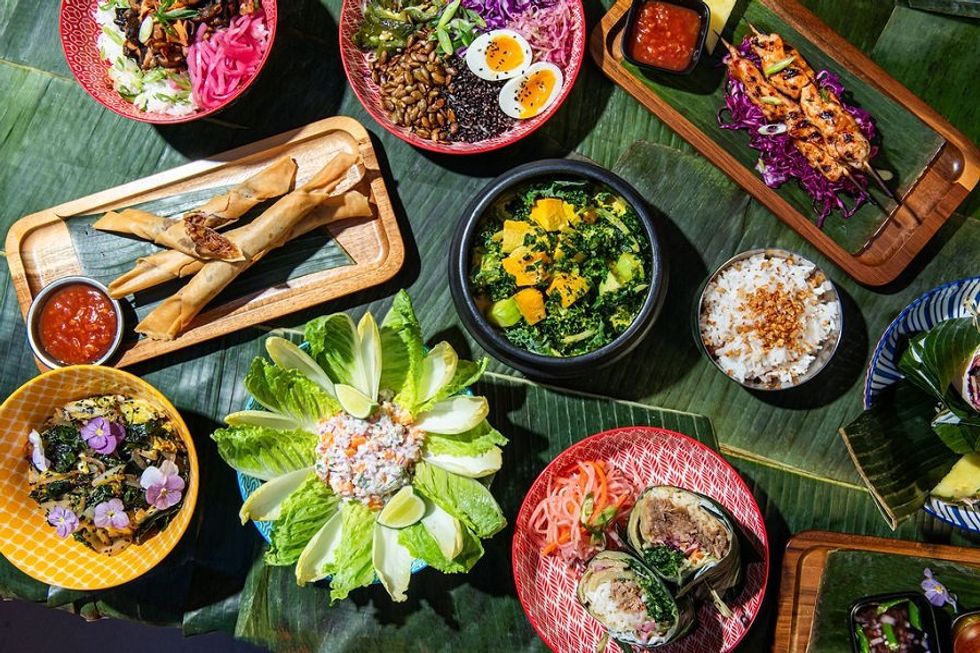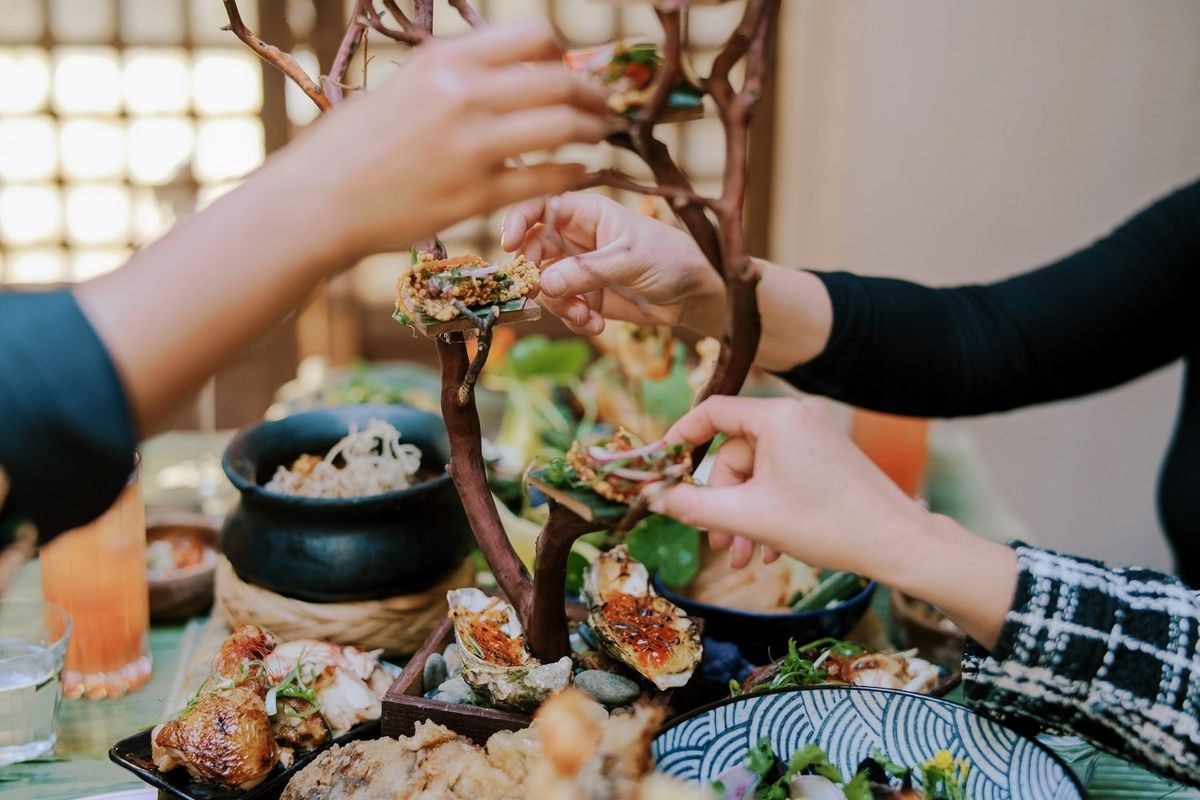Lately, it seems, the city can’t get enough of a good time.
From swanky new lounges to street fairs and festivals, this stage of San Francisco’s post-pandemic recovery is all about gathering together over communal meals and out-of-the-ordinary experiences.
Of all the styles of celebration going off in the city right now, one of the most fun is rooted in Filipino tradition: the Kamayan dinner.
“Kamayan is a communal style of dining which translates to using only your hands to eat,” explains Francis Ang, executive chef and owner of celebrated Filipino restaurant, Abacá. It’s “a feast served over banana leaves with different kinds of inihaw (grilled meats), rice and vegetables, traditionally enjoyed on special occasions with friends and family.”
Kamayan dinner at San Francisco's Mestiza. (Shoshi Parks) youtube.com
Kamayan dinners have been a part of Abacá’s menu since the beginning but, because the restaurant requires 48-hours notice to prepare it (and a minimum of four people at the table), not many have yet had the pleasure. For this current climate of sweet celebration, though, the feast is a perfect fit.
“Participating in a kamayan can transport you and those you are dining with to another time and place, allowing you a more intimate experience,” says Ang.
Deanna Sison—the mastermind behind Little Skillet, Victory Hall, and Lady Victory—wanted her new plant-forward Southeast Asian and Filipino Mestiza, a restaurant founded on the flavors and traditions of Sison’s mixed-Filipina heritage, to have a celebratory kamayan component, too. While on weekdays and Saturday afternoons, the SoMa restaurant’s chef Syl Mislang turns out flavor-rich dishes like calabasa coconut stew, braised pork adobo wraps with garlic rice, sweet potato lumpia, and chicken inisal skewers, Friday and Saturday nights are for feasting.
At a preview held just before Mestiza’s opening this week, the kamayan spread is a symphony of dishes that include shrimp gambas, mushroom aji verde, green papaya atchara, grilled eggplant and tofu, pork belly, tart fruits, and crunchy vegetables. Garlic rice forms the bones of the meal while dipping sauces like pineapple sweet and sour and chili garlic crisp act as the connective tissue between ingredients.

There’s a technique for putting it all together, says Sison: Pick, pull, push. “You use your first three fingers and your thumb,” she says, holding her hand like a lobster claw. “Then you pick up the rice; pack it with proteins, sauces, veggies, and fruit; and push it into your mouth. Just get down and dirty and roll up your sleeves.”
It’s not as easy as she makes it look—but it's just as fun. Sitting on Mestiza’s brightly painted patio with a mountain of food piled onto a tablecloth of banana leaves, I do as Sison instructs. I pick a small lump of rice to which I’ve already added pineapple sweet and sour sauce, mold it into a lump with tofu and baby bok choy, and shovel the whole thing into my mouth with my claw. Only half of it sticks the landing, but even as the rest dribbles down my chin and plops back to the table, I can’t help but laugh out loud, delighted with the flavors and my sticky fingers. I’d forgotten how much fun eating with your hands can be.
That, says Ang, is part of the beauty of kamayan. “Not only is it a cultural experience but I find that it really connects you to the food you touch.”
In Abacá’s version of the feast, the meal is coursed out in three stages onto the banana leaf, starting with snacks like bluefin tuna kinilaw, grilled oysters, and pork lumpia.
For the main, Ang prepares enough food for an army—fitting, since the tradition originated as a way to quickly feed Filipino soldiers, he says. There are proteins like garlic prawns and smoked pork ribs with guava barbecue sauce, skewers of Filipino hot dogs and clam tinola soup; and veggies, fruits and pickles like stuffed delicata squash and Asian pears with pinakurat vinegar. The only thing the table doesn’t have is utensils. Every bit of the feast is eaten with your hands.

The sweet finish at the meal’s end includes s’mores with ube marshmallows and tupig with coconut caramel. Then, when it’s all over, the banana leaves are simply rolled up and tossed in the compost along with the grains of rice and droplets of sauce lost along the way.
“I wanted to add the kamayan as an option to our menu as I find this is an important part of Filipino culture that not many restaurants across the U.S. are offering. It's something I love to partake in every time I go back to the Philippines,” says Ang. “At Abacá, we want our guests to enjoy their experience but also want there to be an educational component to their meal. The kamayan allows them to enjoy the food while also learning a new way to eat and a piece of our culture.”
PS: Want a taste of Abacá without committing to a feast? You'll score a free secret menu dish with your 7x7 Big Drink–listed ube colada when you join 7x7 Social Club.
// Mestiza's kamayan dinners are held from 6pm to 8pm Friday and Saturday nights, by reservation only; 214 Townsend St. (SoMa), mestizasf.com.
// Abacá's kamayan dinners can be arranged for a minimum of four people from 5pm to 9pm weekdays with 48 hours in advance notice; Abacá is located inside the Kimpton Alton Hotel, 2700 Jones St. (Fisherman’s Wharf), restaurantabaca.com.






















